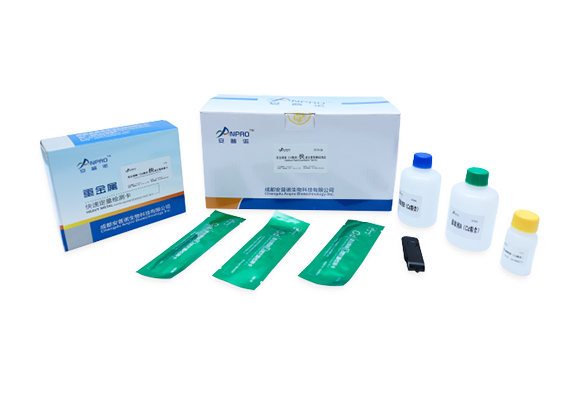
Rapid quantitative testing kits for Lead
Quantitative determination of heavy metal lead in rice, corn, beans, wheat and other food crops and feeds
Product introduction
Lead is harmful to human body. Lead poisoning can cause neurasthenia and dyspepsia, serious lead encephalopathy can occur, the formation of epilepsy, dementia or mental dysphoria, vision loss or even blindness. Lead pollution has spread all over the world, and it is one of the necessary inspection items for grain and food.
1. Kit description
This product is a rapid detection kit for heavy metal lead, which is used for quantitative detection of heavy metal lead content in rice, corn, beans, wheat and other food crops. The national limit of heavy metal lead is 0.2mg/kg (PPM).
2. Principle of kit
The sample was crushed, weighed, extracted with extractant, centrifuged and added with sample diluent to chelate heavy metal ions in the supernatant. Add the sample liquid to the sample pad, chromatography along the direction of the kit to the absorbent paper, the heavy metal ion chelate binds with the colloidal gold labeled monoclonal antibody on the colloidal gold binding pad, the unbound colloidal gold labeled monoclonal antibody specifically binds with the whole antigen corresponding to the heavy metal on the detection line t and is partially intercepted, showing a red band. When the gold labeled monoclonal antibody flows through the quality control line C, part of it reacts with Goat anti mouse IgG on the quality control line C and is intercepted, showing a red band. The color of the detection line t is determined by the instrument, and compared with the standard curve preset in the instrument, so as to accurately determine the content of metal ions.
3. Detection range
Quantitative determination of heavy metal lead content in rice, corn, beans, wheat and other food crops.
Quantitative detection range: 0-1ppm
4. Technical parameters
Reaction temperature: 37 ℃
Reaction temperature: 37 ℃
Precision (CV): within run < 15%, between run < 20%
5. Kit composition
Test card 20 copies / box
Extractant A 1 bottle / box
Extractant B 1 bottle / box
Reagent C 1 bottle / box
Sample diluent 1 bottle / box
6. Preservation conditions of the kit
The test card should be kept at room temperature, not frozen.
Mobile website

